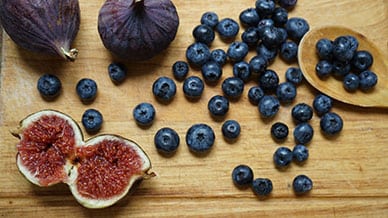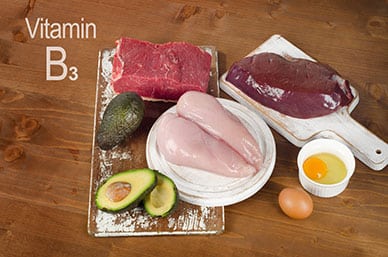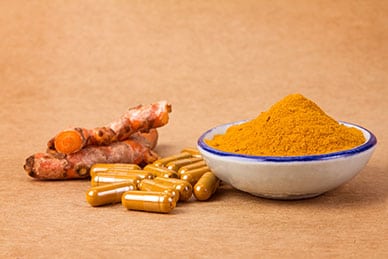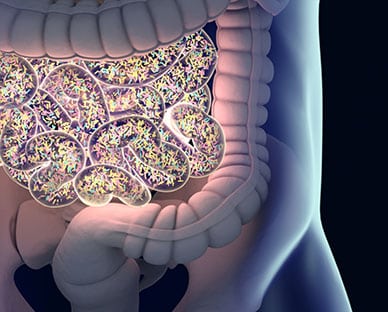All expecting parents want to give their baby the best chance at a healthy and happy life. However, until recently there was very little data on exactly how to accomplish this goal. New research on the effects of nutrition in pregnancy is yielding hard data on exactly what comprises a healthy prenatal diet. Surprisingly, there may even be links between psychiatric diseases such as schizophrenia and diet in pregnancy.
Living with Schizophrenia
Schizophrenia is one of the most serious mental illnesses affecting mankind. People with this disease struggle with delusions, hallucinations and cognitive changes. They also have trouble expressing emotions, with many suffering from a flat affect, or a face devoid of emotion. Over time, they lose interest in social activities and become increasingly closed in their own world. Their behavior and speech become disorganized and then completely nonfunctional.
In the past, people believed that schizophrenics were possessed by demons. In modern times, however, we understand that schizophrenia is a disorder of the brain. The brain undergoes atrophy in areas related to emotion and judgment. In addition, dopamine levels increase and cause frenetic biochemical activity. Schizophrenia is a progressive disease that causes structural changes that cannot be reversed. Prevention along with early identification and treatment are the only solutions currently offered by modern medicine. Learning more about how prenatal nutrition impacts schizophrenia could change the lives of many people suffering from this illness.
The Link Between Schizophrenia and Diet in Pregnancy
Omega-3 and omega-6 acids are known to be important in prenatal brain growth. New research suggests that a lack of these nutrients may increase the fetus’ risk of developing schizophrenia over the course of a lifetime. When pregnant mice were deprived of these two polyunsaturated fatty acids, their offspring developed a flat affect (or expression), disordered behavior and other symptoms that are similar to schizophrenia. The mice also developed brain changes associated with schizophrenia.
How can omega-3 and omega-6 fatty acids have this large of an impact? Researchers found that these fatty acids actually affect the transcription of key genes. These genes govern the expression of key neurotransmitters and are decreased in both fetuses deprived of fatty acids as well as schizophrenics. Genes that support the health of oligodendrocytes, which pass messages in the brain, were also downregulated in these mice, which may be a cause of the structural brain changes seen in this mental illness.
The Impact of Diet on a Growing Brain
 Omega-3 fatty acids have been previously found to be important in the brain health of adults, slowing the progression of neurodegenerative diseases and providing a wide variety of cognitive benefit. They appear to be especially important to the rapidly growing brain of a fetus. However, this study is not the only link between maternal diet and schizophrenia. Another recent study found that eating too much of the essential amino acid methionine could also increase the offspring’s risk of schizophrenia. Pregnant mice that were fed three times the normal daily amount of methionine had offspring that showed behavior associated with schizophrenia. When researchers examined their brains, they found that the gene Npas4 had been downregulated, a change also seen in the brains of human schizophrenics.
Omega-3 fatty acids have been previously found to be important in the brain health of adults, slowing the progression of neurodegenerative diseases and providing a wide variety of cognitive benefit. They appear to be especially important to the rapidly growing brain of a fetus. However, this study is not the only link between maternal diet and schizophrenia. Another recent study found that eating too much of the essential amino acid methionine could also increase the offspring’s risk of schizophrenia. Pregnant mice that were fed three times the normal daily amount of methionine had offspring that showed behavior associated with schizophrenia. When researchers examined their brains, they found that the gene Npas4 had been downregulated, a change also seen in the brains of human schizophrenics.
Methionine is found in cheese, eggs, nuts and other foods that are considered healthy. While pregnant women can enjoy these foods without risk to their future offspring, it is important that they do so in moderation. These studies underscore that a rich and varied diet appears to be one of the most important factors in the health of the fetus.
Good Nutrition for a Lifetime of Health
There are several simple changes that women can make to their diets to increase the chances of good health in their babies. Several studies on the impact of maternal nutrition have found that the following dietary measures are most important:
- beginning pregnancy with a healthy BMI
- taking a folic acid supplement and avoiding medications that affect folate metabolism
- getting plenty of polyunsaturated fatty acids such as omega-3s and omega-6s
- eating protein from a wide variety of sources
- choosing moderation in sugars and simple carbs
- taking a multivitamin or high-quality prenatal supplement
- eating iron-rich foods and taking an iron supplement if necessary to avoid fetal anemia
- taking in a wide variety of fruits and vegetables to get an ample supply of vitamins and phytonutrients
As with all health decisions in pregnancy, it is crucial that women discuss their health and their diet with their doctor. Many women have special dietary needs that their doctor can help them to identify and treat.
Pregnancy is one of the most special times in many women’s lives. Eating a healthy diet is one of the simplest and most delicious ways to give your baby the right start in life. New studies are showing that good nutrition is crucial to maintaining whole body health, both for mother and for the child.
 Purple vegetables and fruits appear to be effective at improving good HDL cholesterol due to unique antioxidants called anthocyanins. Extracts of anthocyanin have been shown in studies to fight free radical damage and possibly
Purple vegetables and fruits appear to be effective at improving good HDL cholesterol due to unique antioxidants called anthocyanins. Extracts of anthocyanin have been shown in studies to fight free radical damage and possibly  Some studies have indicated that green tea and tea extract can help promote healthier LDL cholesterol levels as well as healthy blood sugar and blood pressure, other markers of heart health, thanks to the high concentration of antioxidant polyphenols in tea. One study published in 2003 found that people with moderately high cholesterol who took a tea extract for 12 weeks experienced a
Some studies have indicated that green tea and tea extract can help promote healthier LDL cholesterol levels as well as healthy blood sugar and blood pressure, other markers of heart health, thanks to the high concentration of antioxidant polyphenols in tea. One study published in 2003 found that people with moderately high cholesterol who took a tea extract for 12 weeks experienced a  Lutein is one of 600 carotenoids that’s often called the “eye vitamin” for its use in the prevention of eye diseases. This antioxidant is responsible for giving vegetables and fruits their yellow color. Lutein can only be obtained through diet and supplements; it isn’t produced by the human body.
Lutein is one of 600 carotenoids that’s often called the “eye vitamin” for its use in the prevention of eye diseases. This antioxidant is responsible for giving vegetables and fruits their yellow color. Lutein can only be obtained through diet and supplements; it isn’t produced by the human body. This is not the first study involving lutein and cognitive aging. Another study, published in the
This is not the first study involving lutein and cognitive aging. Another study, published in the  The study began by focusing on families with a condition called VACTERL in which people are born with three or more rare congenital defects. The researchers found that NAD deficiency negatively affected the formation of embryos in people exhibiting VACTERL, causing birth defects or miscarriage, but 12 years of research found that NAD deficiency may also be to blame for other cases of congenital defects and miscarriage.
The study began by focusing on families with a condition called VACTERL in which people are born with three or more rare congenital defects. The researchers found that NAD deficiency negatively affected the formation of embryos in people exhibiting VACTERL, causing birth defects or miscarriage, but 12 years of research found that NAD deficiency may also be to blame for other cases of congenital defects and miscarriage. A new study published in
A new study published in  In addition to acting directly on tumor cells in laboratory settings, curcumin is a powerful antioxidant that can protect against free radicals in the body that cause cell damage. It has also been found to help maintain healthy levels of two enzymes that cause inflammation while also promoting healthy blood flow.
In addition to acting directly on tumor cells in laboratory settings, curcumin is a powerful antioxidant that can protect against free radicals in the body that cause cell damage. It has also been found to help maintain healthy levels of two enzymes that cause inflammation while also promoting healthy blood flow. These are not the only studies published this year on fruit flies and gut bacteria. Another study, published in
These are not the only studies published this year on fruit flies and gut bacteria. Another study, published in